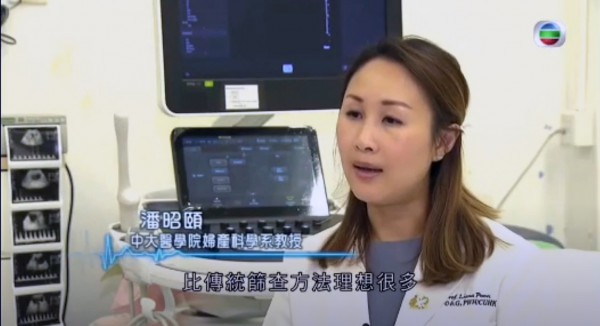First-trimester Preeclampsia Screening

Preeclampsia Screening and Monitoring

What is Preeclampsia?
Preeclampsia is a serious pregnancy complication affecting 2-8% of pregnant women worldwide. Preeclampsia is traditionally diagnosed based on high blood pressure and presence of protein in urine after the 20th week of gestation. Symptoms include headache, blurred vision, nausea, vomiting and leg swelling.
This disorder is thought to be caused by poor function of the placenta, which leads to its inability to support the adequate blood supply required by the fetus, and poor uterine arterial vasodilatation, attributing to the common symptoms of preeclampsia.

Video – 2020.06.01 無線電視 最強生命線 妊娠毒血 Prof Liona Poon O&G CUHK 香港中文大學婦產科
Why Screening?
Preeclampsia is a major cause of morbidity and mortality for both the mother and fetus. Currently, research suggested that through screening and early risk assessment, preventive measures could be instigated to reduce the risk of preeclampsia development.
Our screening follows the newest guidelines set by the International Federation of Gynecology and Obstetrics (FIGO) in 2019 and is evidenced to be in line with the global standards for first-trimester preeclampsia screening.

Video – 2020.02.08 無綫新聞 – 醫療系列 妊娠毒血 Prof Liona Poon O&G CUHK 香港中文大學婦產科
Who is Eligible?
All women with a singleton pregnancy between their 11+0-13+6 weeks of gestation.
Screening Process
- Record obstetric and medical history
- Take blood sample
- Measure blood pressure twice in both arms
- Ultrasound scan to measure uterine artery blood flow
After Screening
The result of estimated risk of preterm preeclampsia will be available in approximately 3 working days.
If you are screened high risk for preeclampsia, you will be invited to attend a follow up visit for further counselling.
Charge
| Plan | Items | Fee (HKD) |
|---|---|---|
| 1. Preeclampsia screening + NIPT | 1. Record obstetric and medical history 2. Take blood sample 3. Measure blood pressure twice in both arms 4. Ultrasound scan to measure uterine artery blood flow 5. Consultation 6. NIPT 7. NT scan 8. Monitoring fetal growth | 6700 |
| 2. Preeclampsia screening | 1. Record obstetric and medical history 2. Take blood sample 3. Measure blood pressure twice in both arms 4. Ultrasound scan to measure uterine artery blood flow 5. Consultation | 2800 |
Monitoring
Women with High Risk of Preeclampsia
For high risk women, we provide a package of monitoring of fetal growth and placental health using ultrasound and blood test during the second and third trimester of pregnancy.
Charge for second and third trimester
| Weeks of gestation | Items | Fee (HKD) |
|---|---|---|
| 20-22 weeks | 1. monitoring fetal growth 2. uterine artery blood flow 3. blood pressure 4. placental protein marker | 2500 |
| 24 weeks | 1. monitoring fetal growth 2. uterine artery blood flow 3. blood pressure | 1200 |
| 28 weeks | 1. monitoring fetal growth 2. uterine artery blood flow 3. blood pressure | 1200 |
| 32 weeks | 1. monitoring fetal growth 2. uterine artery blood flow 3. blood pressure 4. placental protein marker | 2500 |
| 36 weeks | 1. monitoring fetal growth 2. uterine artery blood flow 3. blood pressure 4. placental protein marker | 2500 |
How to make an appointment
In person
Go to The Chinese University of Hong Kong Fetal Medicine Unit Office, Room 30, 2/F, Li Ka Shing Specialist Out-patient Clinic South Wing, Prince of Wales Hospital.
By phone
Call Fetal Medicine Unit Office at (852) 3505 4219 (Please leave your name, telephone number and specify your request).
![]() First-trimester Preeclampsia screening leaflet 早孕期先兆子癇篩查傳單
First-trimester Preeclampsia screening leaflet 早孕期先兆子癇篩查傳單
![]() Lab Request Form-1st Trimester Preeclampsia (PET) Screening 實驗室申請表-早孕期先兆子癇(PET)篩查
Lab Request Form-1st Trimester Preeclampsia (PET) Screening 實驗室申請表-早孕期先兆子癇(PET)篩查

